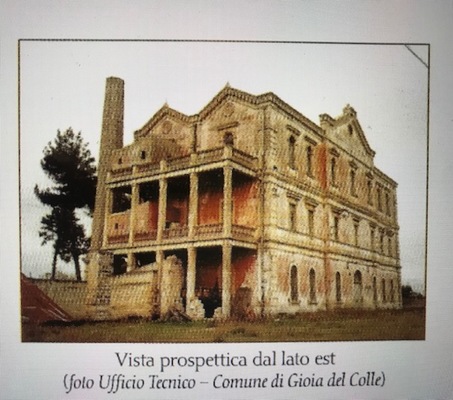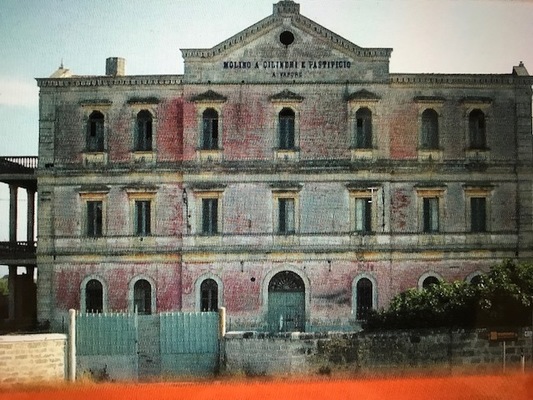- Memory of Europe: Historical intersections and their message for the contemporary genereation
- Prvé školenie učiteľov na škole
- 1st online international Kick-off meeting
- Súťaž o najlepšie logo
- Dotazníky o druhej svetovej vojne
- Videá a prezentácie o histórii 2. sv. vojny
- Medzinárodné online workshopy
- Prvé medzinárodné stretnutie v Rožňave na Slovensku
- Introduction of the teacher project members
- Introduction of the student project members
- Slovakia-Gymnázium P.J.Šafárika - P.J.Safárik Gimnázium Rožňava
- Greece - Geniko Lykeio Mouzakiou
- Poland - I Liceum Ogólnokształcące im. St. Dubois
- Italian IISS Liceo Scientifico Canudo and Reasearch about places in our town linked with WWII
- Presentations of schools and regions
- WWII witnesses
- Outcomes of our students
- Project logo
- Christmas traditions
- Meeting minutes
- Questionnaire about the WWII
- WWII - videos, presentations and interactive pictures
- Memory of Europe International online workshops
- Easter traditions
- Short-term exchanges of groups of pupils in Rožňava
- Outcomes - LTTA Slovakia
- Short-term joint staff training events in Rožňava
- Short-term exchanges of groups of pupils in Gioia del Colle
- Short-term joint staff training events in Gioia del Colle
- Questionnaires from the LTTAs
- Dissemination
- Reasearch about places in our town linked with WWII
- Short-term exchanges of groups of pupils in Koszalin, Poland
- Short-term joint staff training events in Koszalin, Poland
- Short-term exchanges of groups of pupils in Mouzaki, Greece
- Short-term joint staff training events in Mouzaki, Greece
- Pre-work activities
- Questionnaires about the LTTAs
- Lesson plans
- Lesson plan piloting - results
- Wall reading competition
- Final project outcomes
- Piloting the board game
Reasearch about places in our town linked with WWII
A Mill in Gioia del Colle was used as Internment Camp during WW II
THE MILL AND PASTA FACTORING “ALFREDO PAGANO”
The mill and pasta factoring “Alfredo Pagano” was built in 1903, beyond the
railway line, which represented a real border line between the traditional city
and the “new industrial city” .Its construction, together with that of the
"Excelsior" mill, located in via Lagomagno, was financed for the purpose
advertising, from the Biihler company of Zurich, manufacturer of machinery
for mills and pasta factories. The two factories were data under management,
in exchange for an annual fee, to Mr. Enrico Pagano, entrepreneur of Turesi
origins, who has moved in Gioia in 1894: the Molino Excelsior to Enrico and his
son Luigi, the Pastificio to the other son Alfredo.In June 1909, having become
owners of the Molino, Enrico and Luigi, formed a partnership, took over the
Pastificio "for the agreed annual rent of Lire one thousand". In 1926, the Pagan
declared bankruptcy to the Cassa di Taranto and the building thus became the property of a private individual trader from Taranto, who would have bought it to obtain the cast iron of the machinery. He remembered Vito Nettis , industrialist and owner of Molino Vito Nettis, which developed in the same area around the years '30, that in 1926, when he finished his service as a carabiniere on horseback, the Pastificio
Alfredo Pagano was already closed.The factory then passed to the cav. Angelo
Lattarulo, former owner of a gray-green cloth factory in Gioia for account of the State (Lanificio Lattarulo), who probably wanted to adapt it to his business or transform it into family mansion. From August 1940 to January 1941, Lattarulo himself placed the
building at the disposal of the fascist authorities , who they made it an internment camp for Italian Jews.
With the art. 1 of the Duce's Decree of 4 September 1940 it was established that "the
enemy subjects who are interned can be grouped in special concentration camps, or
be obliged to stay in a place determined by the internment measure". On 15 August
1940 the first thirty-five inmates arrived in Gioia, all Italian Jews, transferred from the
Campaign concentration camp in the province of Salerno; in the following months
others arrived, but they did not exceed the number of fifty-nine in total. The internees of Gioia, were all Italians, the average ageWith the art. 1 of the Duce's Decree of 4 September 1940 it was established that "the enemy subjects who are interned can be grouped in special concentration camps, or be obliged to stay in a place determined by the internment measure". On 15 August 1940 the first thirty-five inmates arrived in Gioia, all Italian Jews, transferred from the Campaign concentration camp in the province of Salerno; in the following months others arrived, but they did not exceed the number of fifty-nine in total.
Kontakty
- GYMNÁZIUM PAVLA JOZEFA ŠAFÁRIKA - PAVOL JOZEF ŠAFÁRIK GIMNÁZIUM ROŽŇAVA
- Sekretariát školy: 058/7324503
Riaditeľ školy: 058/7324503 - Akademika Hronca 1
048 01 Rožňava
04801 Rožňava
Slovakia - 00161144
- 2020954243
Fotogaléria
zatiaľ žiadne údaje
Powered by aSc EduPage
